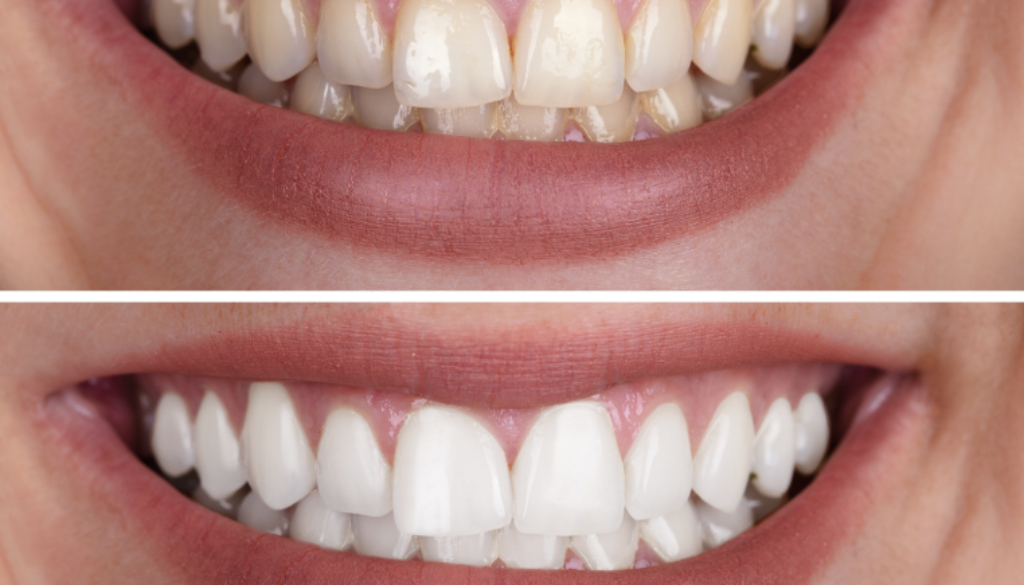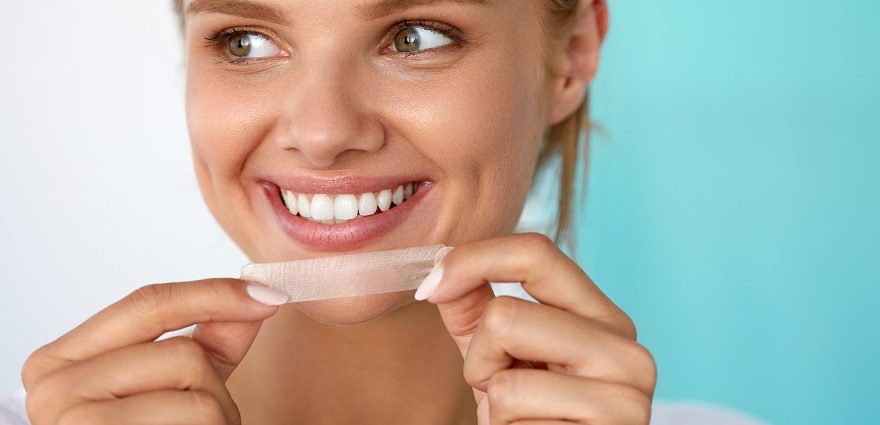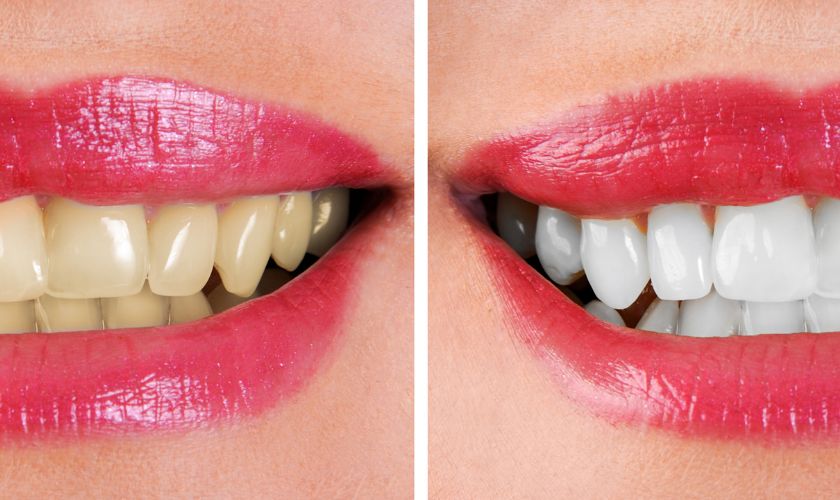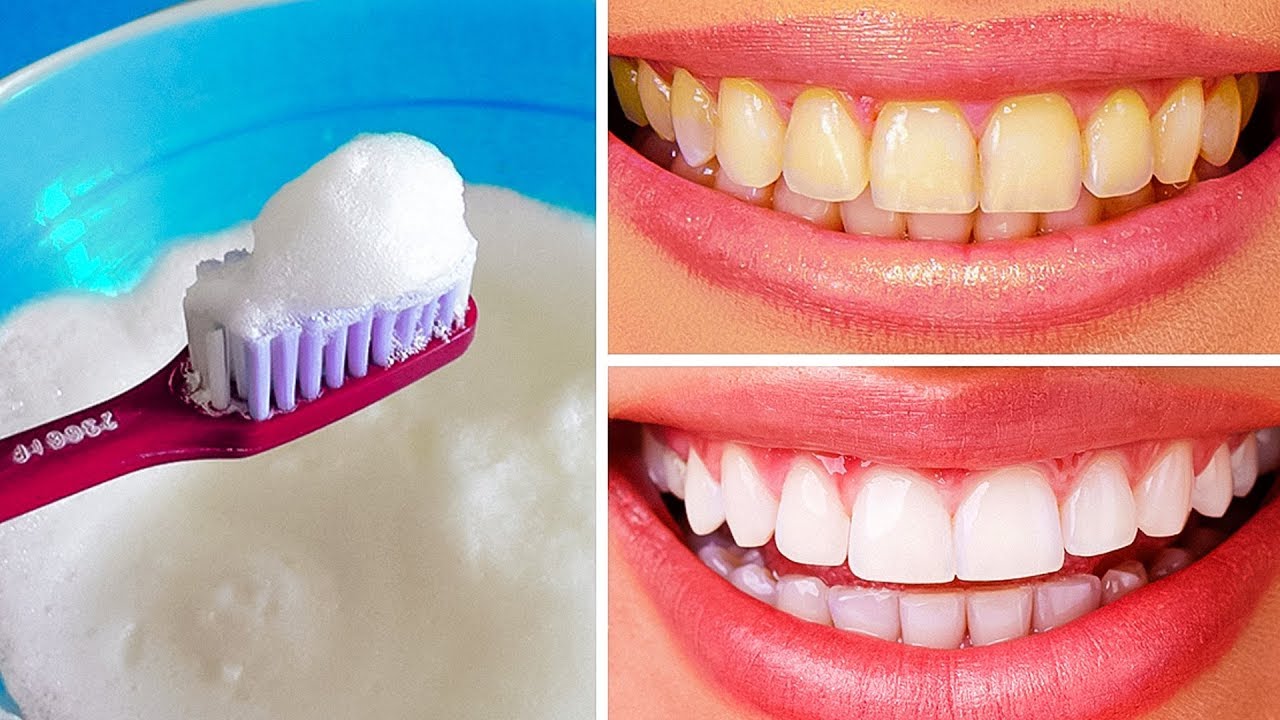Contents
Introduction
A radiant and bright smile is often associated with good health and confidence, making teeth whitening a popular cosmetic concern. While professional dental treatments are available, at home teeth whitening options provide a convenient and cost effective means for individuals to enhance the color of their teeth in the comfort of their own homes. This comprehensive guide explores the various methods, considerations, and safety precautions associated with at home teeth whitening, empowering you to achieve a luminous and healthy smile without the need for extensive dental visits.
Teeth discoloration is a common concern , and understanding its intricacies is vital for effective whitening. Discoloration can stem from both extrinsic and intrinsic factors, such as daily habits like consuming coffee, tea, or tobacco, as well as genetic predispositions and aging. Recognizing the types of tooth stains, including surface and deep stains, forms the foundational knowledge necessary for selecting the most appropriate at home whitening method.
As we delve into the multitude of home teeth whitening options, ranging from specialized toothpaste and whitening strips to gels and natural remedies, it is crucial to navigate this array with an informed perspective. Each method comes with its unique application process, ingredients, and considerations. We will explore the mechanisms behind whitening toothpaste and the key ingredients to look for, as well as the application intricacies of strips and gels. Additionally, natural remedies like the baking soda and hydrogen peroxide paste, and oil pulling will be examined for their potential effectiveness and safety.
Prior to embarking on any at home teeth whitening journey, proper preparation is paramount. A comprehensive dental check up is essential, ensuring that any underlying oral health issues are addressed before initiating the whitening process. Selecting the right product tailored to individual needs, accompanied by insights gained from product reviews, further enhances the likelihood of a successful at home whitening experience.
The subsequent sections will guide you through the step by step process of at home teeth whitening, emphasizing general guidelines, pre application preparation, and the correct execution of each chosen method. Maintenance post whitening is equally important, with a focus on sustaining oral hygiene, avoiding staining substances, and incorporating appropriate touch up treatments.
However, no cosmetic procedure is without considerations of potential side effects. Throughout this guide, we will discuss common side effects such as tooth sensitivity and gum irritation, providing proactive strategies for prevention and management. Importantly, we emphasize the necessity of consulting with a dentist, detailing when professional advice should be sought and how to address unexpected issues.
In conclusion, this guide aims to equip you with a comprehensive understanding of at home teeth whitening, from the underlying causes of discoloration to the intricacies of each whitening method. Armed with this knowledge, you can embark on your teeth whitening journey with confidence, achieving a brighter, healthier smile and radiating the self assurance that comes with it.
Understanding Teeth Discoloration
Teeth discoloration is a multifaceted concern influenced by a spectrum of factors. To effectively address this issue through at home whitening, it’s essential to delve into the root causes and types of tooth stains.
Causes of tooth discoloration are broadly categorized into extrinsic and intrinsic factors. Extrinsic factors primarily result from external influences and include common culprits like coffee, tea, and tobacco stains. These surface stains often accumulate over time, affecting the outer layer of the teeth. Additionally, red wine, certain foods, and even inadequate oral hygiene can contribute to extrinsic discoloration. On the other hand, intrinsic factors are inherent to the tooth structure. Aging, medication, and genetic predispositions can lead to internal discoloration, making it imperative to recognize that not all stains are superficial.

Understanding the various types of tooth stains is pivotal for tailoring an effective whitening strategy. Surface stains , often caused by extrinsic factors, are typically easier to address and respond well to at home treatments. Conversely, deep stains require a more nuanced approach, as they originate within the tooth’s structure. Recognizing the nature of the stain is the first step toward selecting an appropriate at home whitening method.
Home Teeth Whitening Options
In the pursuit of a brighter smile from the comfort of one’s home, a myriad of teeth whitening options is available. Each method comes with its own set of application techniques, ingredients, and considerations. Understanding the nuances of these at home whitening options is crucial for making informed choices based on individual preferences and needs.
Whitening Toothpaste :
Whitening toothpaste is a popular and accessible choice for at home teeth whitening. It distinguishes itself from regular toothpaste through the inclusion of specific ingredients designed to break down and remove surface stains. Common components include abrasives, enzymes, and mild chemicals. Understanding how whitening toothpaste works and identifying key ingredients, such as silica or baking soda, enables users to choose a product aligned with their preferences.
Whitening Strips :
Whitening strips are thin, flexible pieces coated with a peroxide based gel. These strips adhere to the teeth, allowing the whitening agent to penetrate and bleach stains. The application process involves placing strips on the upper and lower teeth for a specified duration. Mastery of the application technique and adherence to recommended frequency are essential for optimal results. Users should also consider potential side effects, such as tooth sensitivity, and adjust usage accordingly.
Whitening Gels and Trays :
Whitening gels, often containing carbamide or hydrogen peroxide, are applied directly to the teeth using trays. These trays, customized or generic, ensure even distribution of the whitening agent. Proper application instructions and adherence to recommended guidelines, such as wearing time and frequency, are critical for efficacy and safety. Users should be mindful of potential gum irritation and choose products that minimize these risks.
Natural Remedies :
For those inclined towards natural approaches, home remedies like a baking soda and hydrogen peroxide paste or oil pulling present alternative options. Baking soda, with its mild abrasive properties, can help scrub away surface stains, while hydrogen peroxide acts as a bleaching agent. Oil pulling involves swishing oil in the mouth to reduce bacteria and stains. Understanding the recipes, application methods, and safety considerations of these natural remedies ensures effective and risk aware usage.
Preparing for At Home Teeth Whitening
Before embarking on any at home teeth whitening journey, thorough preparation is essential to ensure both efficacy and safety. This section explores the necessary steps and considerations individuals should take before applying various at home whitening methods.

Dental Check Up :
Initiating the teeth whitening process with a clean bill of oral health is paramount. Scheduling a dental check up is the first crucial step. A professional examination helps identify and address any underlying dental issues, ensuring that the whitening process is built on a foundation of optimal oral health. Addressing concerns such as cavities or gum issues before whitening helps prevent potential complications and enhances the overall success of the treatment.
Choosing the Right Product :
Selecting an appropriate at home teeth whitening product involves considering individual needs and preferences. The market offers a plethora of options, from whitening toothpaste to gels and strips. Users should evaluate the specific characteristics of each product, including the concentration of whitening agents, potential side effects, and ease of use. Reading product reviews provides valuable insights into the real world experiences of other users, aiding in the selection of a product aligned with personal expectations.
As individuals navigate the selection process, it’s essential to understand that different at home whitening methods cater to distinct needs. Factors such as the severity of stains, desired level of whitening, and potential side effects should all influence the decision making process.
Steps for At Home Teeth Whitening
Once adequately prepared, individuals can proceed with the step by step process of at home teeth whitening. This section outlines the general guidelines and specific procedures for each chosen whitening method, ensuring an effective and safe whitening experience.
General Guidelines :
Before beginning any at home teeth whitening treatment, it’s crucial to familiarize oneself with the general guidelines applicable to all methods. Following the product instructions meticulously is paramount to achieving optimal results while minimizing potential risks. Patience and consistency are key, as teeth whitening is a gradual process that requires regular application over a designated period. Rushing the process or overusing whitening products can lead to adverse effects such as tooth sensitivity or gum irritation.
Preparing for Application :
Prior to applying any whitening product, individuals should prepare their teeth and mouth for the treatment. This includes adhering to a thorough oral hygiene routine to remove any food particles or plaque that may interfere with the whitening process. Additionally, avoiding staining substances such as coffee, tea, or tobacco helps prevent new stains from forming during the whitening treatment. Proper preparation sets the stage for maximum effectiveness and minimizes potential complications.
Applying the Chosen Whitening Method :
The application process varies depending on the chosen at home whitening method. Whether using whitening toothpaste, strips, gels, or natural remedies, it’s essential to follow specific instructions to ensure proper and safe application.

- Whitening Toothpaste: Apply a pea sized amount of whitening toothpaste to a toothbrush and brush teeth thoroughly for the recommended duration, typically two minutes. Rinse thoroughly afterward.
- Whitening Strips: Carefully apply the strips to the upper and lower teeth, ensuring they adhere properly. Leave the strips on for the specified duration, usually around 30 minutes, and then remove them. Rinse or brush teeth afterward to remove any residual gel.
- Whitening Gels and Trays: Apply a small amount of whitening gel to the inner surface of the tray, ensuring even distribution. Place the tray over the teeth and wear it for the recommended duration, typically 30 minutes to several hours, depending on the product. Rinse the tray thoroughly after use.
- Natural Remedies: Follow specific instructions for the chosen natural remedy, such as mixing baking soda with hydrogen peroxide to form a paste or swishing oil in the mouth for a designated period. Rinse thoroughly afterward.
Proper application technique and adherence to recommended usage frequency are essential for achieving desired results while minimizing potential side effects. Consistency and patience are key throughout the whitening process.
Post Whitening Care
Achieving a brighter smile through at home teeth whitening is a significant accomplishment, but proper post whitening care is crucial to maintain results and promote long term oral health. This section outlines essential steps and considerations for individuals after completing their at home teeth whitening treatments.
Maintaining Oral Hygiene :
Sustaining good oral hygiene practices is fundamental to preserving the results of at home teeth whitening. Regular brushing, flossing, and rinsing with an antimicrobial mouthwash help remove surface stains, prevent plaque buildup, and maintain overall oral health. Adopting a consistent oral care routine significantly contributes to prolonging the effects of teeth whitening.
Avoiding Staining Foods and Drinks :
Post whitening, individuals should be mindful of their dietary choices to prevent new stains from forming. Staining substances such as coffee, tea, red wine, and tobacco can compromise the newly achieved whiteness. While complete avoidance may be challenging, moderation and prompt oral hygiene practices after consuming such items can mitigate potential staining.
Touch Up Treatments :
Over time, teeth may naturally undergo minor discoloration due to factors like aging and dietary habits. Incorporating periodic touch up treatments helps counteract this gradual fading and ensures a sustained bright smile. The frequency of touch up treatments varies based on individual needs and the chosen at home whitening method. Users should refer to product guidelines and consult with their dentist for personalized recommendations.
In addition to these general post whitening care practices, individuals should be aware of potential side effects that may persist after the whitening process, such as tooth sensitivity. If sensitivity persists or becomes uncomfortable, it’s advisable to consult with a dentist for guidance on managing and alleviating these symptoms.
Potential Side Effects and Safety Tips
While at home teeth whitening can lead to a brighter smile, it’s essential to be aware of potential side effects and adhere to safety guidelines to ensure a positive and risk free experience. This section provides insights into common side effects and proactive measures to promote safety during and after at home teeth whitening.
Tooth Sensitivity :
One of the most common side effects associated with teeth whitening is tooth sensitivity. This occurs when the whitening agents penetrate the enamel and irritate the nerve endings in the teeth. To minimize sensitivity:
- Choose products with lower concentrations of whitening agents.
- Use desensitizing toothpaste containing ingredients like potassium nitrate.
- Consider spacing out whitening sessions to allow teeth to recover.
If sensitivity persists or becomes severe, it’s advisable to consult with a dentist for personalized recommendations.
Gum Irritation :
Improper application of whitening products, especially gels or trays, can lead to gum irritation. To prevent or alleviate gum irritation:
- Follow product instructions regarding the amount of gel or solution to use.
- Wipe off excess gel to avoid contact with the gums.
- Consider using products with built in protective measures for the gums.
If persistent irritation occurs, discontinue use and consult with a dentist.
Consultation with a Dentist :
While at home teeth whitening is generally safe, it’s crucial to know when to seek professional advice. Consult with a dentist:

- Before starting any whitening treatment, especially if pre existing dental conditions are present.
- If significant tooth sensitivity or gum irritation occurs.
- If unexpected issues arise during or after the whitening process.
Dentists can provide guidance, recommend adjustments, or address any underlying dental concerns that may affect the whitening experience.
Adhering to these safety tips ensures a smoother at home teeth whitening journey, minimizing the risk of adverse effects and promoting a positive outcome. A proactive and informed approach enhances the overall safety and effectiveness of the whitening process, allowing individuals to achieve the desired results while prioritizing their oral health.
Conclusion
In wrapping up this comprehensive guide to at home teeth whitening, we revisit key aspects, provide final tips, and encourage the adoption of consistent oral care practices for a lasting, bright smile.
Recap of At Home Teeth Whitening Methods :
This guide has explored various at home teeth whitening methods, including whitening toothpaste, strips, gels, and natural remedies. Understanding the specific features, application techniques, and considerations for each method empowers individuals to make informed choices based on their preferences and needs.
Final Tips for a Brighter, Healthier Smile :
Achieving a brighter smile is not merely a one time endeavor; it’s an ongoing commitment to oral health. As a final set of tips:
- Maintain Consistent Oral Hygiene : Regular brushing, flossing, and rinsing contribute to overall oral health and help sustain the results of teeth whitening.
- Mindful Dietary Choices : Be conscious of foods and drinks that can stain teeth, and practice moderation or prompt oral hygiene after consuming them.
- Regular Dental Check ups : Schedule periodic dental check ups to monitor oral health, address any emerging issues, and receive professional guidance on maintaining a bright smile.
- Adjust Whitening as Needed : Periodic touch up treatments can counteract natural discoloration, ensuring a sustained, vibrant smile over time.
Encouragement for Consistent Oral Care :
In the pursuit of a brighter and healthier smile, consistency is key. Adopting a holistic approach to oral care, encompassing both daily practices and periodic treatments, contributes not only to the aesthetic appeal of a smile but also to overall oral well being.
Remember, each individual’s dental characteristics are unique, and what works for one person may differ for another. Tailoring at home teeth whitening methods to personal needs, understanding potential side effects, and consulting with a dentist when needed form the pillars of a successful and safe teeth whitening journey.
